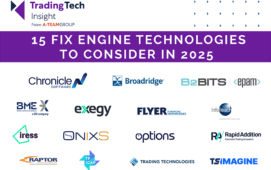Here are the latest questions from the IntelligentTradingTechnology.com community e-mail bag, together with some brief answers. There’s an update on Knight Capital, Cisco’s new switch (and other switch offerings), Nasdaq OMX’s new FPGA data feed, and also the bigger picture on market data rates.
Q: What’s the latest on Knight Capital and the rogue algo that nearly made them bankrupt?
A: The firm has appointed IBM to review its operational procedures to pinpoint what went wrong. In the meantime, they’ve moved their CTO Steven Sadoff to a new job and are looking outside for a new CTO. Also, interestingly, IBM is also reviewing Nasdaq OMX’s systems in the wake of the Facebook IPO debacle.
The company has said (in very general terms) that some old code that should not have been running was the culprit. Others have suggested it could have been a test program designed to generate orders that accidentally got into the production system. Hopefully the IBM investigation will come up with precise answers, and that they’ll be made public so that others can learn from any mistakes.
Q: There’s been a lot of buzz about Cisco’s new Nexus 7548 switch. What do you make of it?
A: Well, it’s fast. Time will tell – it will be a few months before it is exercised in anger in real-life situations – but it looks to be a significant offering, with sub-200 nanosecond latency. That’s a lot faster than its arch rival Arista Networks. It will be interesting to see how Arista responds. Indeed, whether it will respond.
The most interesting aspect of this switch, at least to me, is that Cisco built the core network processing chip – or ASIC – in house, instead of buying it from a third party, as it has done before for these type of switches. That’s a big undertaking, and certainly serves as a demonstration of its commitment to the financial markets.
Q: But Sub-190 nanoseconds isn’t the fastest switch is it?
A: Well, it depends on comparing like for like. I believe the Cisco switch is the fastest in its class, supporting Layer 2 and 3 network protocols. Gnodal’s Layer 2 switches are faster (and are store/forward, not cut-through), and Zeptonics has products that are much faster, but also much more limited in functionality. It’s a case of choosing the right switch for the job, based on functionality needed. Zeptonics just announced its first customer, so what it has works for some.
Q: Nasdaq OMX’s new FPGA Itch data feed has also generated some discussion. Why?
A: FPGA’s are now pretty commonplace for trading firms receiving market data feeds, but this may be the first time that a data feed has leveraged FPGAs on the distribution side. Nasdaq is employing FPGAs in order to service a fairly limited number of customers that are very latency sensitive, and who need data as fast as they can, without queuing delays that occur with the standard (software driven) data feed at peak trading times.
The impact, though, is that without those queuing delays, market data bursts need to be handled, and the exchange is saying they could be as high as 2,000 messages in a millisecond. Perhaps a case of being careful what one asks for?
Q: More generally, given the recent drop in trading volumes in the markets, does that mean that market data rate issues are a thing of the past?
A: Nope, as it depends on what markets a trading firm is operating in. The OPRA firehose looks to be less of an issue – though market volatility (and there’s plenty of that) could send message rates through the roof again. Other markets – such as Bats Chi-X Europe and Direct Edge – have shown record increases in the past month.
More questions please, to pete@low-latency.com.
Subscribe to our newsletter




